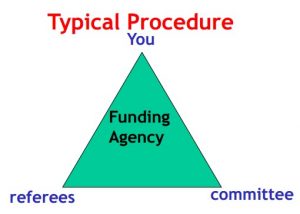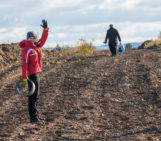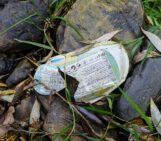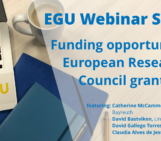
Drafting your first grant proposal can be daunting. Grant writing improves with experience, so how do early career scientists compete on an equal footing with those who are more established?
At this year’s General Assembly we tackled this very question at the Finding Funding (SC46) short course. Grant Allen, an atmospheric scientist, who has plenty of experience in applying for funding spoke about the key steps to building confidence in your research ideas, how to frame those ideas into a clear grant application for reviewers and funding agencies, and how to structure your proposals to make sure your proposal fits the goals of the organisation you are applying to.
Grant has authored a book, entitled “Effective Science Communication”, which contains detailed chapters on grant writing, as well as other aspects of science communication from conference presentations to dealing with the media. Keep an eye out for this this summer. It will be released as an e-book by the Institute of Physics, UK.
It is all about confidence
There is no doubt that your first grant application will be daunting, not least because so much of your career can hang in the balance while you prepare it and because it is so far removed from anything you may have done before. Start by accepting it is outside your comfort zone and most importantly: be confident in yourself and your research ideas.
An investment in you
It may be counterintuitive but funding bodies are looking to fund you and your potential as a future research leader, almost as much ) as they are looking to invest in a great research idea (especially in the case of research fellowships).
That’s why your application should showcase you as a great potential researcher. This means highlighting your track record as a way to demonstrate your future potential. Show reviewers what skills and experience you already have and show that you can look forward and think of your career beyond the project by establishing partnerships and knowledge exchange opportunities throughout the duration of the grant.
The funding procedure
Each funding body has its own application structure, so we won’t go into too much detail here. It is worthwhile spending some time, before you put pen to paper, getting to grips with the stages involved in the process. The funder’s handbook is usually a good place to start.
A typical procedure will be orchestrated by the funding body, who will bring in reviewers to rate your proposal in the first stage of the application process. You may get the opportunity to rebut the reviewers’ comments before a final decision is made on whether your proposal is to continue on in the selection process (more detail on this, as well as dos and don’ts of rebuttals in Grant’s slides). Should you be successful, you may go on to present your research idea and yourself to a panel or committee who will make the final decision on who gets the award.
Writing your proposal
Remember reviewers will read upwards of 40 proposals at a time, so put yourself in their shoes – make reading your proposal easy!
Overall, you should aim to keep things simple, logical and concise. Start off with the bigger picture using general language, and slowly build up a narrative as you guide the reviewer through the application by giving greater detail about the approach. It helps to remind the reviewer about the key points throughout and to structure each subsection clearly with a start, middle and end.
Do:
- Use the present perfect: ‘although much work has been done’
- Use constructive phrasing: a problem is in fact, a challenge

Writing tools. By Pete O’Shea via Flickr
You’ll have heard this endlessly since you were an undergraduate, but it is never truer than in a grant proposal: a picture is worth a 1000 words. Include carefully chosen informative figures, which add value to the written content and make your proposal look good at the same time.
It is heart-breaking how many great proposals get thrown out by reviewers because the applicants don’t follow the formatting guidelines or text includes typos, spelling mistakes and/or poor grammar. Just as it pays to understand the application process in full, take the time to follow all the guidelines, no matter how fastidious they may seem.
And finally, remember that the majority of proposals are unsuccessful, especially the first time. Accept this, learn from any feedback you are given and be resilient and try, try again. It will be worth it in the end.
Budget
Writing your thesis/papers will have prepared you, at least to some extent, for authoring the proposal, but one area which presents a bigger challenge still is the budget of your project. Figuring out how much money you need to see your project through is no easy task, so it is worth asking for some help from a mentor, senior researcher or your faculties finance team to make sure you get it right.
Less is more? When it comes to preparing the budget for your project this doesn’t necessarily apply. In fact, don’t under resource your project. Proposals don’t fail if the bottom line is high, they fail if it isn’t justified or if the reviewers get the impression that your numbers are ‘too good to be true’. Use the resources you need, nothing less and nothing more.
Panel Interview
![By Vector Open Stock - http://www.vectoropenstock.com/ [CC BY-SA 3.0 (http://creativecommons.org/licenses/by-sa/3.0)], via Wikimedia Commons](https://blogs.egu.eu/geolog/files/2016/06/Business_presentation_byVectorOpenStock.jpg)
Use the panel interview to shine and show the panel what makes you and your research unique, interesting and achievable. By Vector Open Stock – CC BY-SA 3.0, via Wikimedia Commons
Structure your slides carefully and anticipate questions by addressing issues that may have been thrown up by the reviewers of your proposal. While it may be tempting to cram in lots of information to your slides, the less is more approach certainly applies now. Stick to approximately one slide per minute and have no more than one take-home-message in each sheet. Finally, make sure you dedicate some time to explaining why you are the right person for the job and why the time and place are right for the project.
Do’s and Don’ts
You’ll find plenty more details on each of the topics covered above in the Grant’s slides, be sure to take a look at them and use the comments section of this post to share your tips for grant writing too. We’ll finish with a short selection of do’s and don’ts.
Do:
- Be ambitious, passionate, clear and concise
- Write for decisions makers – make sure there is enough detail without it being inaccessible for non-specialist-scientists
- Stress how your research will contribute to solving economical, societal and/or cultural challenges
- Follow the format guide
- Get letters of support from project partners if you have any
- Use your CV to prove your track record
- Do ask for help!
Don’t
- Your application shouldn’t be a simple extension of your supervisor’s current project (if you are a PhD or PDRA) – emphasise what is new.
- Use negative or defensive language (in your proposal, rebuttal or presentation Q&A)
- Treat the proposal as a paper
- Be afraid to ask for help!
By Laura Roberts Artal, EGU Communications Officer
This blog post is based on the presentation by Grant Allen at the Short Course: Finding Funding (SC46) which took place at the 2016 EGU General Assembly in Vienna. The full presentation can be accessed here.





